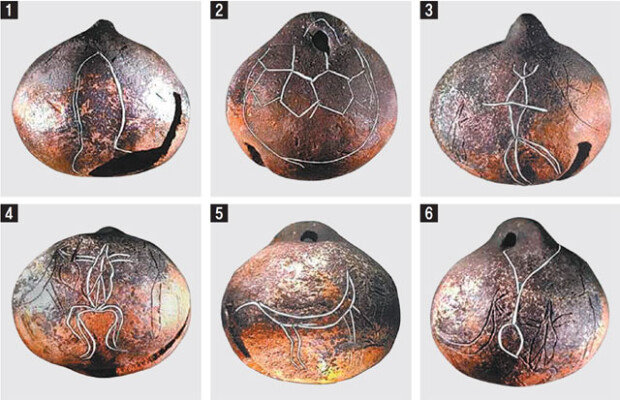Archaeologists find clay bell depicting Gaya’s founding myth
Archaeologists find clay bell depicting Gaya’s founding myth
Posted March. 21, 2019 07:46,
Updated March. 21, 2019 07:46

“Turtle, turtle, put out your head. Or else I will roast and eat you.” It is a part of “Gujiga,” the founding myth of the Gaya Kingdom, an ancient confederacy of chiefdoms in what is now the southern part of the Korean Peninsula. The myth had it that when the people of Garak, an old name of Gaya, sang the turtle song, the heaven sent six princes to found six Gaya chiefdoms. The myth was recorded only in books including the Gaya Chronicle of Samguk Yusa, or the Memorabilia of the Three Kingdoms. However, archaeologists have discovered the first relic depicting Gaya’s founding myth in pictures.
The Daedong Culture Foundation, which excavated the Jisan-dong Tumuli in Goryeong, North Gyeongsang Province with approval from the Cultural Heritage Administration, said Wednesday that it discovered a clay bell, which has pictorial depiction of Gaya’s founding myth, at a fifth-century tumulus.
The bell, which was publicly displayed at the Daegaya Museum in Goryeong, is measured at 5 centimeters in diameter. Examined through a magnifying glass, the bell had six patterns on the surface -- a phallus depicting the top of Mount Gaya, a turtle shell, a man in a crown, a dancing woman, a person looking up at the sky, and a sack on a rope being descended from the sky.
“Each picture matches what is described in the Gaya Chronicle,” said Bae Seong-hyeok, the head of research at the foundation. “This is the first time in Korea that a relic with visualizes an ancient founding myth carried only in books.” He added that the relic also makes it possible to infer that the myth of a founding father being born from an egg was common among Gaya chiefdoms.
Archaeologists also discovered the teeth and a piece of the skull bone of a child along with the clay bell. Based on the findings, the foundation presumes that the occupant of the tumulus was a four- to five-year-old child who was about one meter tall. Cho Yeong-hyeon, head of the Daedong Culture Foundation, said that considering the bell was found near the left thigh, it seemed to have been worn on the wrist or held in the hand. He estimated that the relic dated back to the fifth century, considering the shapes of clayware, ironware and tools excavated together.
Won-Mo Yu onemore@donga.com







